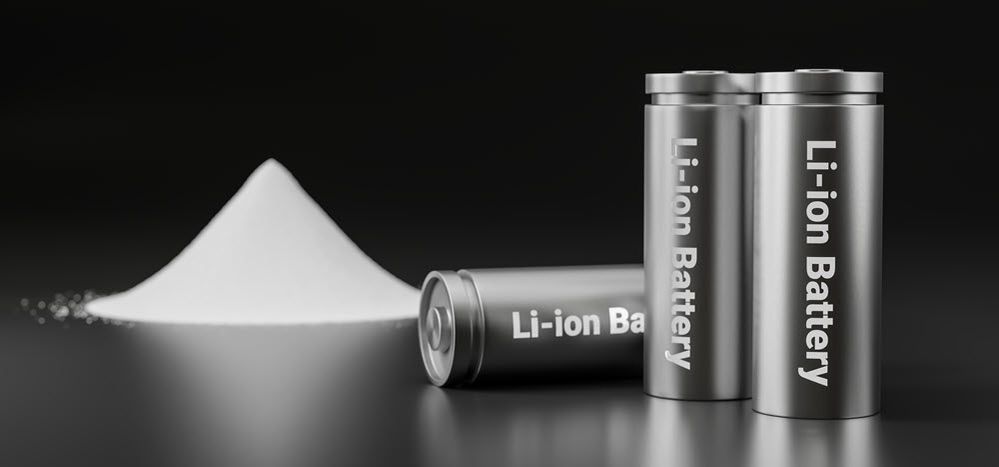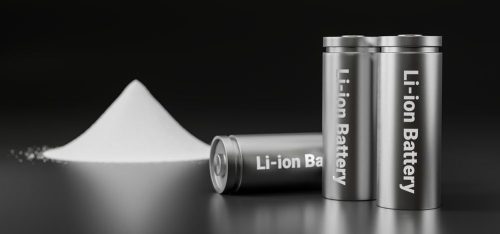Lithium battery, as a booming emerging industry, has great development potential and prospects. In order to promote the healthy and orderly development of the industry, relevant industry standards are continuously formulated and released. Among them, the relevant technical standards for lithium battery anode materials have also been clearly stipulated. Which indicators to look at specifically?
1. Crystal structure of anode materials
Different crystal structures and chemical compositions will cause the physical and chemical properties of the powder to vary widely, which in turn will affect the application of the powder. Commonly used anode material graphite has two crystal structures, one is hexagonal phase and the other is rhombohedral phase. The degree of order of the crystal structure is related to the difficulty of graphitization. The greater the degree of graphitization, the easier it is for the carbon material to be graphitized, and the higher the degree of order in the crystal structure. The higher the degree of graphitization, the fewer corresponding lattice defects, the smaller the electron migration resistance, and the kinetic performance of the battery will be improved.
2. Particle size distribution of negative electrode materials
The particle size distribution of the negative electrode material will directly affect the pulping process and volumetric energy density of the battery. In the case of the same volume filling fraction, the larger the particle size of the material and the wider the particle size distribution, the smaller the viscosity of the slurry, which is conducive to increasing the solid content and reducing the difficulty of coating. In addition, when the particle size distribution of the material is wide, the small particles in the system can fill the gaps of the large particles, which helps to increase the compaction density of the pole piece and increase the volumetric energy density of the battery.
3. Density of anode material
Density refers to the mass per unit volume of a material in an absolutely dense state. Powder materials are generally porous. According to whether the volume of these pores is included, it can be divided into true density, effective density and apparent density, and apparent density is divided into compacted density and tapped density. In practical applications, manufacturers are more concerned about the apparent density of the material. For negative electrode materials, the density will directly affect the volumetric energy density of the battery. For the same material, the higher the compacted density, the higher the volumetric energy density, so the standard has requirements for the lower limit of each density.
4. Specific surface area of negative electrode material
The specific surface area of the negative electrode material has a great influence on the kinetic performance of the battery and the formation of the solid electrolyte membrane. If the specific surface area of graphite is too large, the initial capacity loss will be too much, and more binder will be added, resulting in an increase in internal resistance. The specific surface area of graphite is related to the shape and surface structure of graphite particles. For example, artificial graphite has a special microporous structure, which has a large specific surface area, increases the number of active sites, increases the reaction area, improves the utilization rate of active materials, and shows high capacity and high rate performance. It can be said that the specific surface area of graphite particles is too large or too small to be conducive to the reversible deintercalation of lithium ions, and only a suitable specific surface area can reversibly deintercalate lithium ions to the maximum.
5. Requirements for negative electrode materials on pH and moisture
The pH and moisture of the negative electrode material have an important influence on the stability of the material and the pulping process. The trace moisture contained in the powder material can be measured by Karl Fischer coulometric titration. For pH. The sample can be mixed with distilled water and then measured with a pH meter.
6. Element content of negative electrode materials
Graphite is mainly composed of three parts: fixed carbon, ash and volatile matter. Fixed carbon is the real electrochemically active component. The standard has strict requirements on the content of fixed carbon, at least greater than 99.5%. In addition, in addition to fixing the main elements of carbon and lithium, the anode material will introduce some impurity elements during the modification process such as coating and doping. They will also seriously affect the electrochemical performance of the battery and need to be strictly controlled. In addition, some negative electrode materials contain restricted elements such as cadmium, lead, mercury, hexavalent chromium and their compounds, which are harmful to animals, plants and the environment, so there are strict restrictions on such substances in the standards.
7. The initial reversible specific capacity and initial efficiency of negative electrode materials
The initial reversible specific capacity of the negative electrode material refers to the delithiation capacity in the first week, and the initial efficiency refers to the ratio of the delithiation capacity to the lithium intercalation capacity in the first week, which can largely reflect the electrochemical performance of the electrode material. Moreover, the reversible specific capacity of the battery can reflect the stable capacity of the material in subsequent cycles to a certain extent, which is also of great practical significance.


